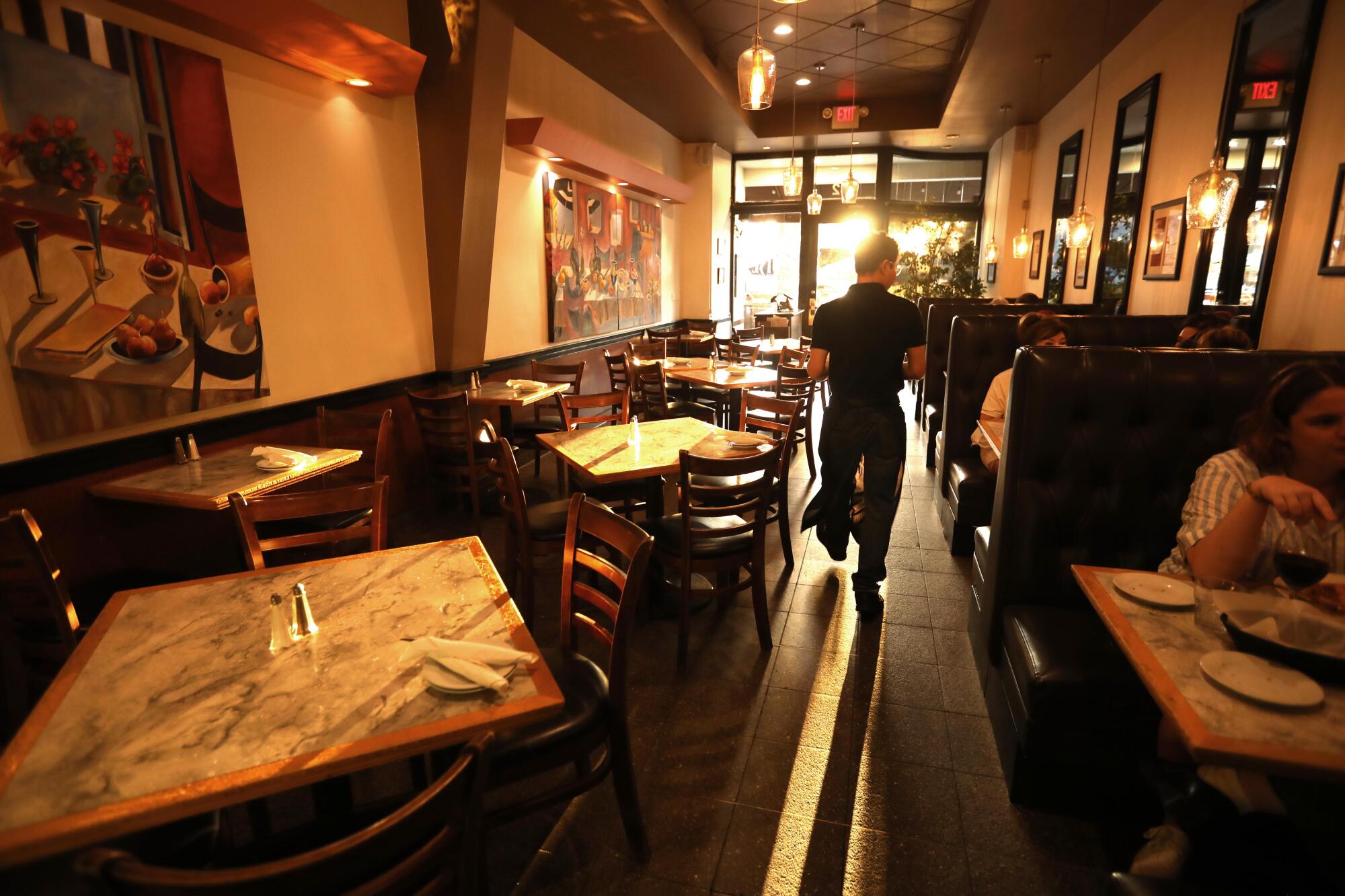
- Share via
At the dawn of the 1980s, the Italian restaurant scene in Los Angeles was awash in red-checkered tablecloth spots heavy on red sauce — and light on places that elevated the cuisine above Americanized comfort food.
Then a new restaurant chain began to expand across Southern California. It never gained national fame. Nor did it garner culinary acclaim.
But beginning in the mid-’90s, it became a farm system for young Italian chefs who would go on to impressive, decades-long careers in L.A.
Gino Angelini of Angelini Osteria cooked there. So did Nicola Mastronardi of the recently closed Vincenti Ristorante. Lucio Bedon of the newly opened Vicini Ristorante & Wine Bar had a stint there too. Overseeing things was restaurateur Bill Chait, who later opened a string of renowned L.A. restaurants like Bestia and Republique.
Celebrities including Mel Gibson, Michael Keaton and Arnold Schwarzenegger were fans of the chain. Guy Fieri even worked there as a district manager.
The restaurant chain was Louise’s Trattoria. At its peak, there were 19 locations of the eatery, from Santa Monica to Philadelphia.
“It was a glorious moment,” said Chait, who co-founded the chain in 1985.
Today, only one Louise’s remains. It’s located in Larchmont Village — a relic amid the teeming bakeries, trendy coffee shops and busy fast-casual eateries that line the neighborhood’s namesake street near Hancock Park.
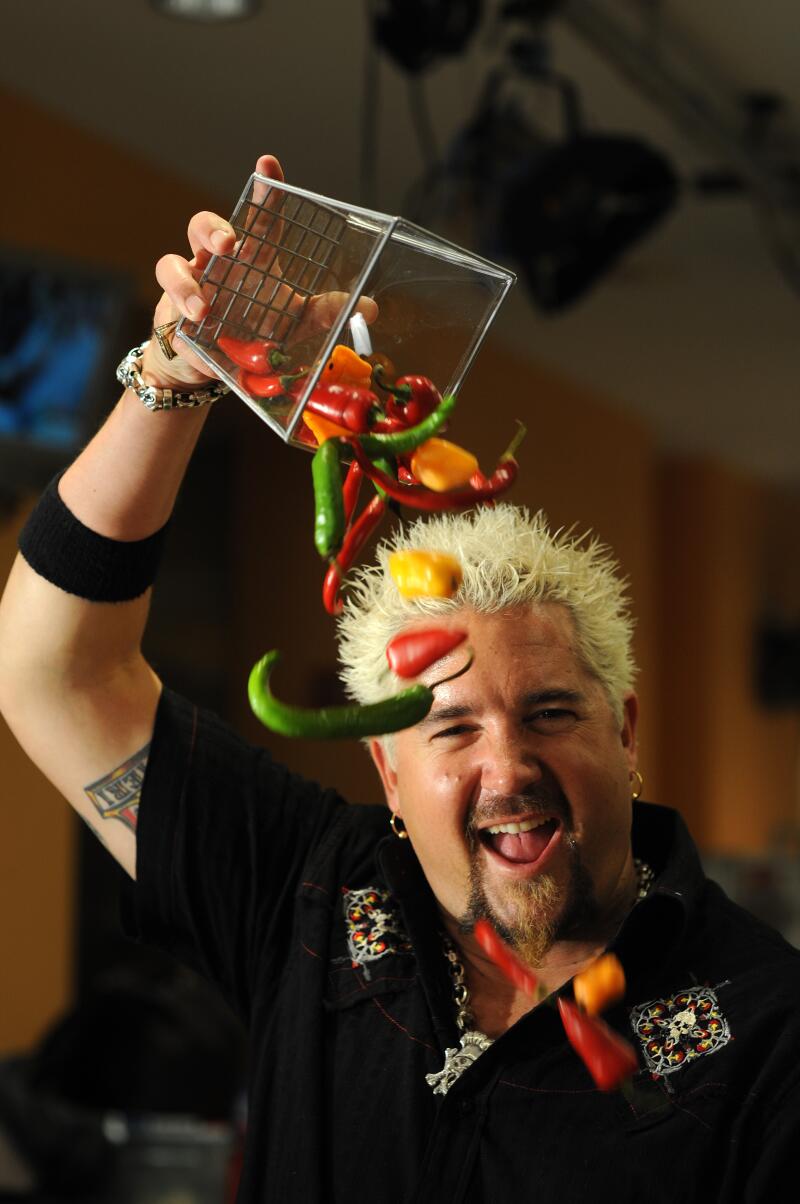


1. Guy Fieri, the Food Network personality. (Jennifer S. Altman / For The Times) 2. Chef Gino Angelini, left, of Angelini Osteria on Beverly Boulevard. ( Bob Chamberlin / Los Angeles Times) 3. Bill Chait, the restaurateur behind several notable L.A. spots. ( Kirk McKoy / Los Angeles Times)
Louise’s was ravaged by many of the same forces that hurt other chains birthed in Southern California, including Marie Callender’s and Hamburger Hamlet. Among the challenges: the proliferation of fast-casual restaurants, which overtook Louise’s in popularity. An ill-fated East Coast expansion tipped the chain into Chapter 11 bankruptcy protection in 1997. Middling to bad reviews followed.
In 2000, a Times write-up of the Louise’s in Huntington Beach groused that the brunch buffet “suffered from neglect,” with “jerky-tough” carne asada, “too gooey” potatoes and “cold and bland” scrambled eggs. Upon the 2011 closure of the Louise’s in Studio City, the food blog Grub Street snarked: “Every time a mediocre chain restaurant closes, an angel gets [its] wings.”
Then came the COVID-19 pandemic, which brought a spike in the cost of labor and food — and helped stoke the rise of third-party food-delivery services, which can extend a restaurant’s reach but take a sizable cut of each sale.
The Louise’s on Larchmont Boulevard is a lonely survivor in a fertile Italian dining landscape that includes Michelin-starred stunners such as Osteria Mozza, glitzy hot spots like Mother Wolf and rustic neighborhood gems including Alimento.
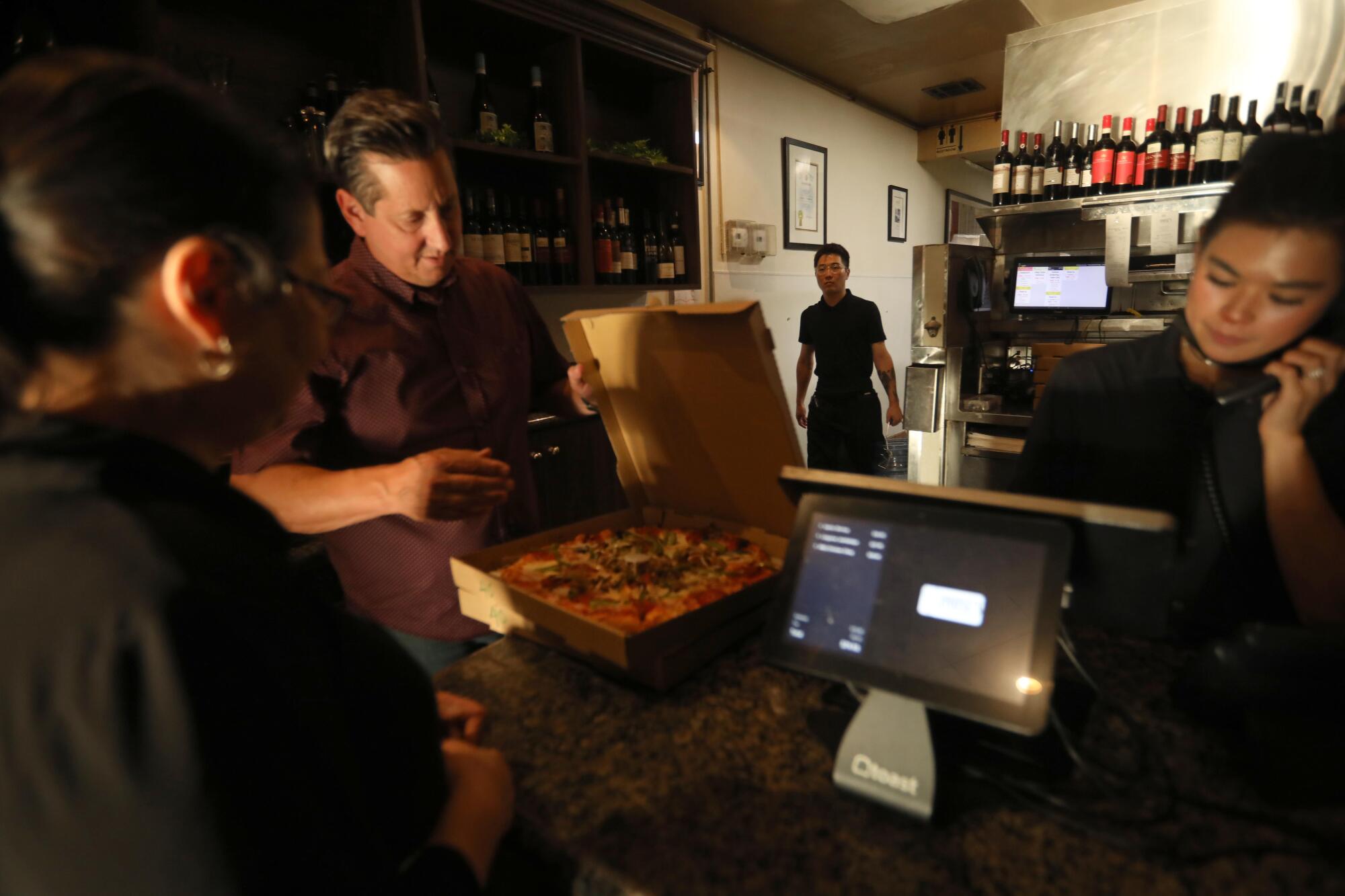
Rob Serritella, who owns Louise’s with his wife, Karen, said he’s never considered closing the mid-priced, family-friendly restaurant, which traces its roots to a Santa Monica pizzeria that opened in 1978. He said it has a legacy that is worth preserving.
“I still loved the Louise’s brand and hated to see it die,” said Serritella. “I still thought there was something there.”
Surprising pedigree
L.A. entered the ‘80s with a glut of staid Italian-American restaurants.
There was at least one notable outlier: Piero Selvaggio’s Valentino opened in 1972 and has been credited with introducing Angelenos to white truffles, balsamic vinegar and other Italian ingredients. But, for the most part, this was a spaghetti-and-meatballs town.
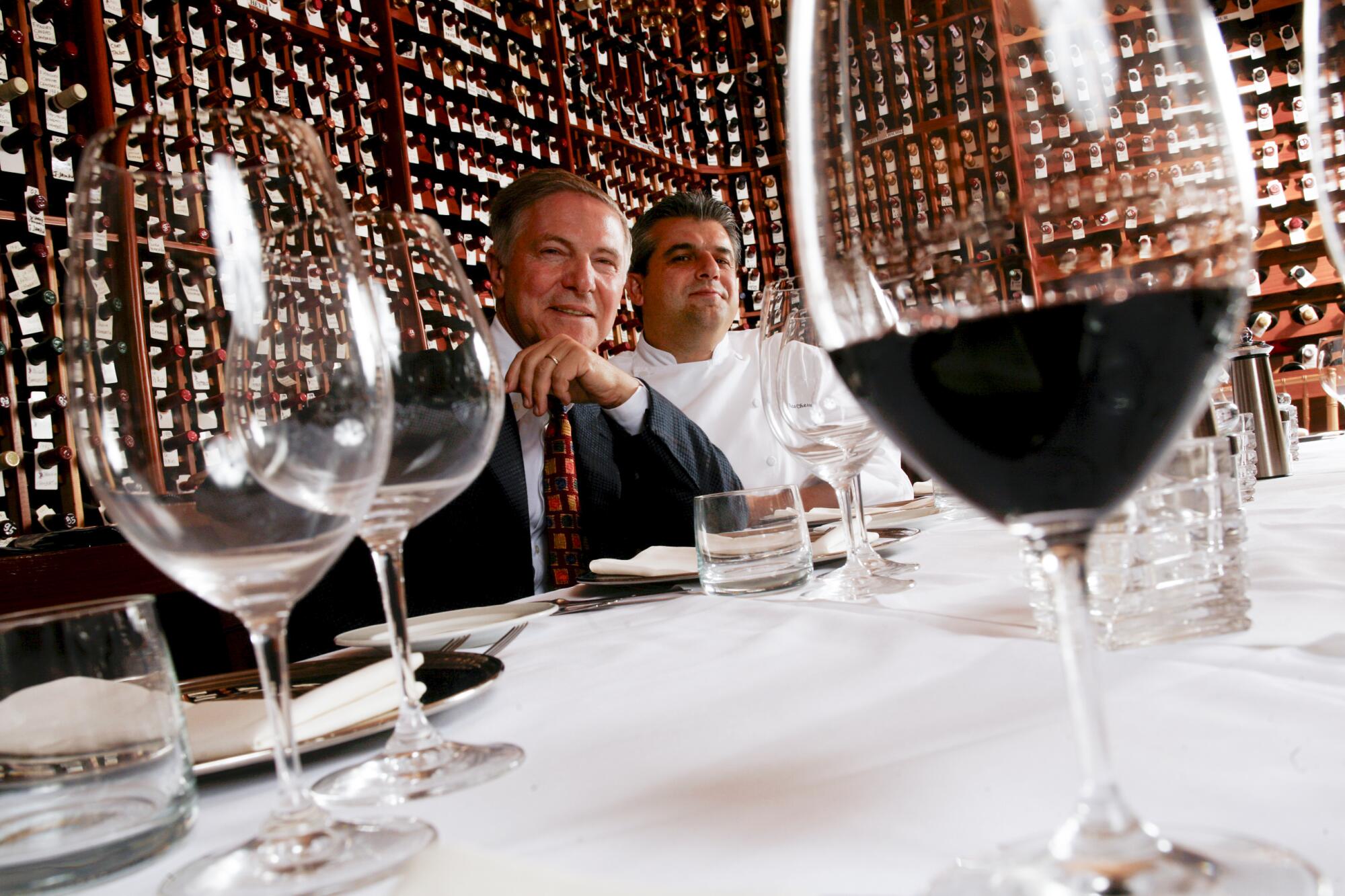
“People just thought about red-checkered tablecloth restaurants when they thought about Italian,” said Evan Kleiman, host of “Good Food” on KCRW. “They didn’t think about real, contemporary Italian food.”
Rex Il Ristorante, which Mauro Vincenti opened in 1981, elevated Italian cooking in Los Angeles. The downtown L.A. restaurant offered “sublimely elegant contemporary Italian cuisine” turned out by a kitchen operating with an “abiding respect for quality ingredients,” former Times critic S. Irene Virbila wrote in a rave review.
Following Rex, other new Italian restaurants began filtering the cuisine through a California prism, spotlighting bountiful local ingredients. Among the notable spots: Kleiman’s Angeli Caffe, which debuted on Melrose Avenue in 1984 and closed in 2012.
Ruth Reichl, the author and former Times restaurant critic, said Angeli was “affordable and modest — and it wasn’t red sauce.”
“The real game changers were Piero, Mauro and Evan, each of whom did something completely different but really important for what happened to Italian food in L.A.,” said Reichl. “The 1980s were a halcyon time; L.A. was the most interesting place to eat in the country.”
In 1985, Chait, then in his mid-20s, set his sights on a small Santa Monica pizza place called Louise’s, buying it with two partners from owners Louise and Jackie Berardis.
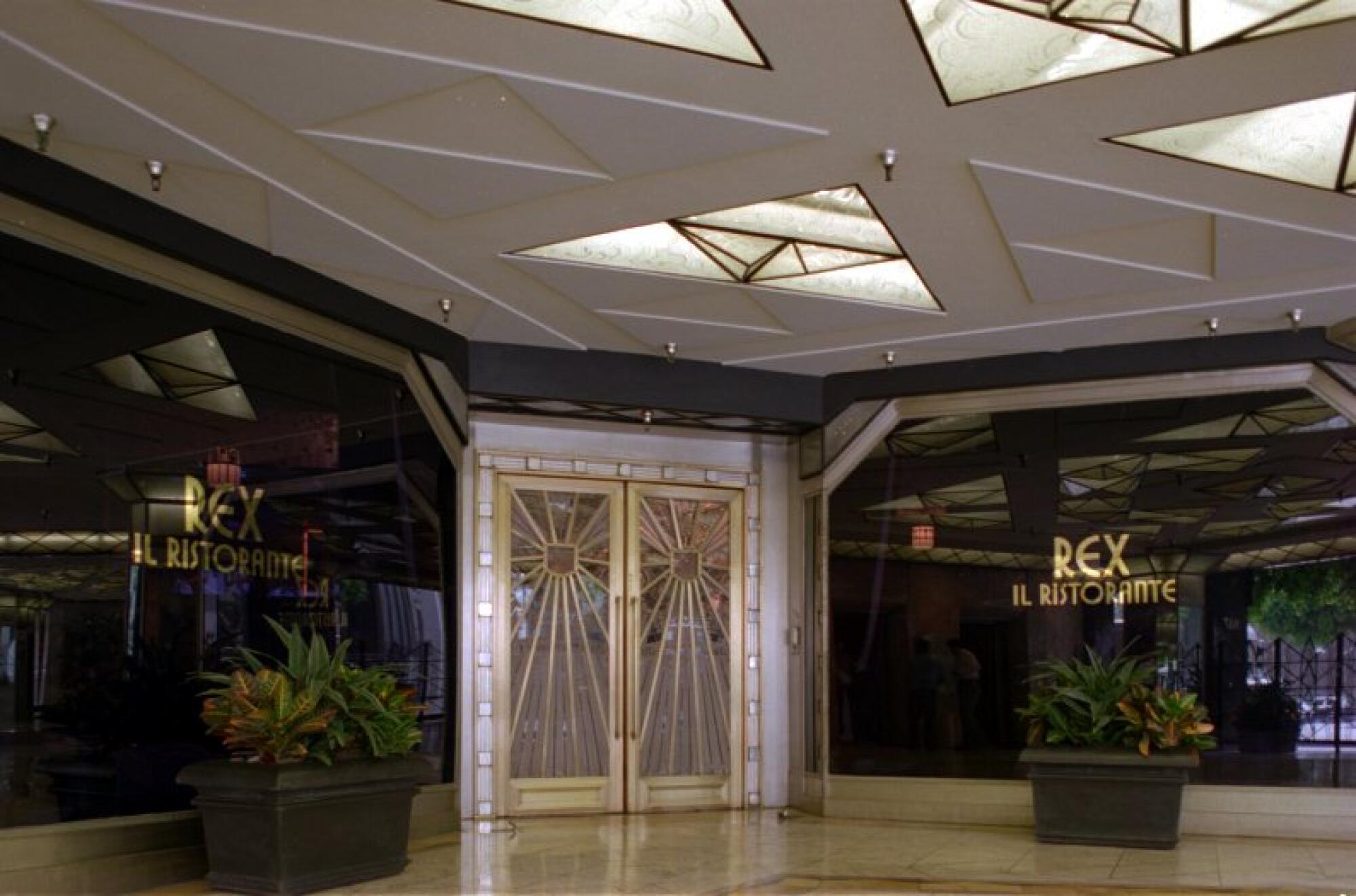
Amid Louise’s expansion, Chait tapped Vincenti in 1994 to serve as a consultant, with a focus on bolstering the quality of the food. They decided that most of the restaurants in the chain should have an Italian in the kitchen. So Vincenti plucked up-and-coming chefs from Italy, transforming Louise’s into an incubator of culinary talent and lending it some surprising blue-chip pedigree.
One of Vincenti’s hires, Angelini, said that he was impressed by the “very high quality” of ingredients used by Louise’s, including dry pasta from Latini, a top producer, and 24-month aged prosciutto di Parma.
“I was surprised, to tell you the truth,” said Angelini who briefly worked at Louise’s in 1995 — his first job in the U.S. — before moving to Rex, which Vincenti helmed until his death in 1996.
Angelini, whose eponymous osteria was recently named to The Times’ 101 Best Restaurants Hall of Fame, said that his time at Louise’s “opened my mind to understand everything” about how a restaurant should be run. The chef, who also helped recruit Italian cooks for the chain, noticed, for example, how ownership deftly managed the cost of ingredients it purchased.
Louise’s also launched Mastronardi’s career in the U.S. He joined the restaurant group in 1994 and cooked there for three years. He marveled that Louise’s, which then had more than a dozen locations, was making many items from scratch.
“The mentality was fresh,” he said. “Fresh pizza dough. Fresh pasta. Everything was made fresh.”
A 1995 Times review of the Louise’s in Pasadena praised the revamp orchestrated by Chait and Vincenti.
“Louise’s former aglio e olio was a greasy mess with mushrooms, cheese, limp noodles,” it said. “The authentic new version is a study in bare-bones simplicity that flaunts the quality of its four ingredients: olive oil, garlic, red chiles, spaghetti.”
Despite all this, the chain’s ties to a number of notable Italian chefs have largely been unknown, with Reichl and Kleiman both saying they were unaware of the history.
It may be that this part of the Louise’s story has been obscured by what came next: a long slide into mediocrity following the bankruptcy 26 years ago.
A ‘fatal blow’
How does a restaurant chain go from 19 locations to just one? Not without major mistakes. For Louise’s, the biggest — the one Chait called a “fatal blow” — was trying to expand to the East Coast.
In the mid-1990s, Louise’s took on a business partner and an investment from a private equity firm to open in cities including Washington, D.C., and Philadelphia.
“When you’re a young entrepreneur you think you walk on water,” Chait said. “The problem with Louise’s on the East Coast was that the dynamics there were very different. To become a national chain is much harder than it looked.”
The expansion, he said, left Louise’s with about $12 million in unsecured debt.
“It’s the story I hear a lot about companies of that size,” said longtime restaurant industry executive Frank Guidara. “They have one that is successful, so they stretch their limbs and open a second ... and they take it from there. But when you stretch, you have to have unbelievable management.”

Following the Chapter 11 reorganization, Chait stepped back from the business, which was acquired out of bankruptcy by his brother, Jon Chait, for $7 million. It marked the beginning of a long, slow retreat. Louise’s began closing restaurants; by 2000, it was down to 13 locations.
A year later, Serritella joined the chain as chief operating officer, eventually becoming CEO. Before long, the terrorist attacks of Sept. 11 triggered an economic slowdown that pushed him to embark on another round of consolidation.
In the 2010s, the company closed additional Louise’s locations and converted others into new concepts, including Mess Hall in Los Feliz in 2012, and Holy Cow BBQ in Santa Monica in 2014, Serritella said. He left Louise’s around 2015; within three years the chain had withered to just two locations — on Larchmont and West Pico Boulevard.
Alex Susskind, senior director of academic programs at Cornell University’s Nolan School of Hotel Administration, said that the biggest challenge for restaurants such as Louise’s has been the rise of fast-casual chains, which have changed diners’ behavior.
“You can be in and out of a Chipotle in 25 minutes,” he said. “Consumers got used to that. Sitting ... for an hour and 10 minutes just seems to be less and less desirable.”
Serritella wasn’t ready to give up on Louise’s and in 2018, when the then-owners of the downsized chain asked him to rejoin the business, he bought the two remaining Louise’s restaurants and two locations of Holy Cow. After managing the business through the early years of the COVID-19 pandemic, he turned his attention to the Larchmont restaurant, which opened in 1988.
“We literally have three generations of customers,” Serritella said. “It is almost indestructible.”
Sue A. Welsh, who lives near Larchmont Village, said she has been going to the Louise’s there since the early 1990s, and relished taking her grandchildren to the restaurant when they were young.
“That was a big treat to take them after school to Louise’s — I think of it as a special memory,” said Welsh, 84. “It’s become like a family-centered place filled with memories. You feel like you’re in an Italian embrace.”
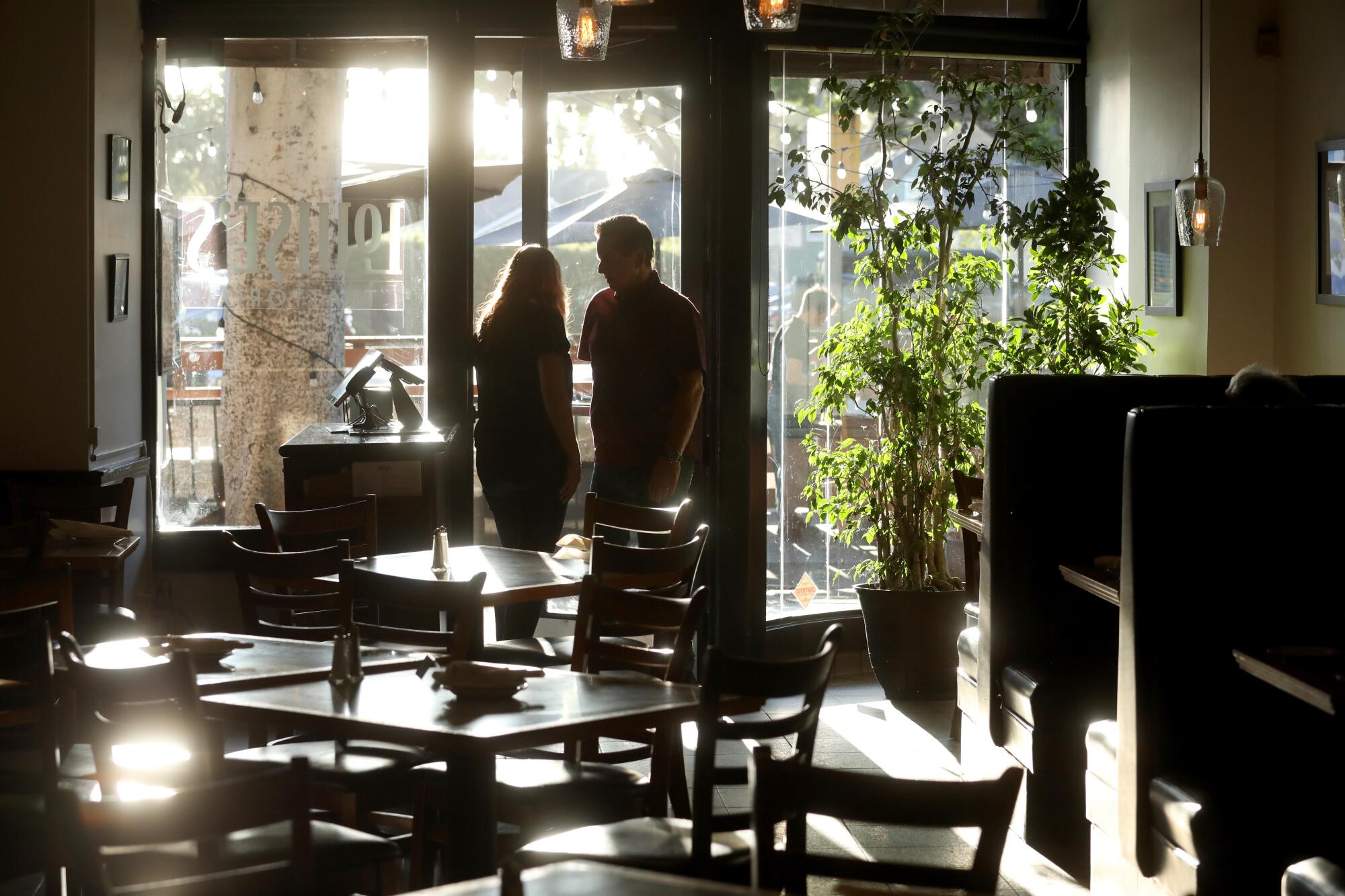
Serritella declined to disclose the Larchmont restaurant’s revenue but said that sales have increased in 2023. “Business is as good as it ever has been,” he said, partly attributing the success to the eatery’s catering operation.
“The fact that this brand has survived what it survived is itself extraordinary,” he added.
In May, Louise’s debuted a new menu. While nodding to the chain’s Italian heritage, Serritella added items that he believes have wide appeal. Among the new dishes are fish tacos served with cilantro risotto — and what he termed an “Italian-ish” hamburger.
Reinvention on Pico
Even though there is only one Louise’s left, the chain’s legacy lives on at a new eatery: Vicini Ristorante & Wine Bar. The West L.A. restaurant embodies the unsung role Louise’s had in deepening and diversifying L.A.’s Italian food scene.
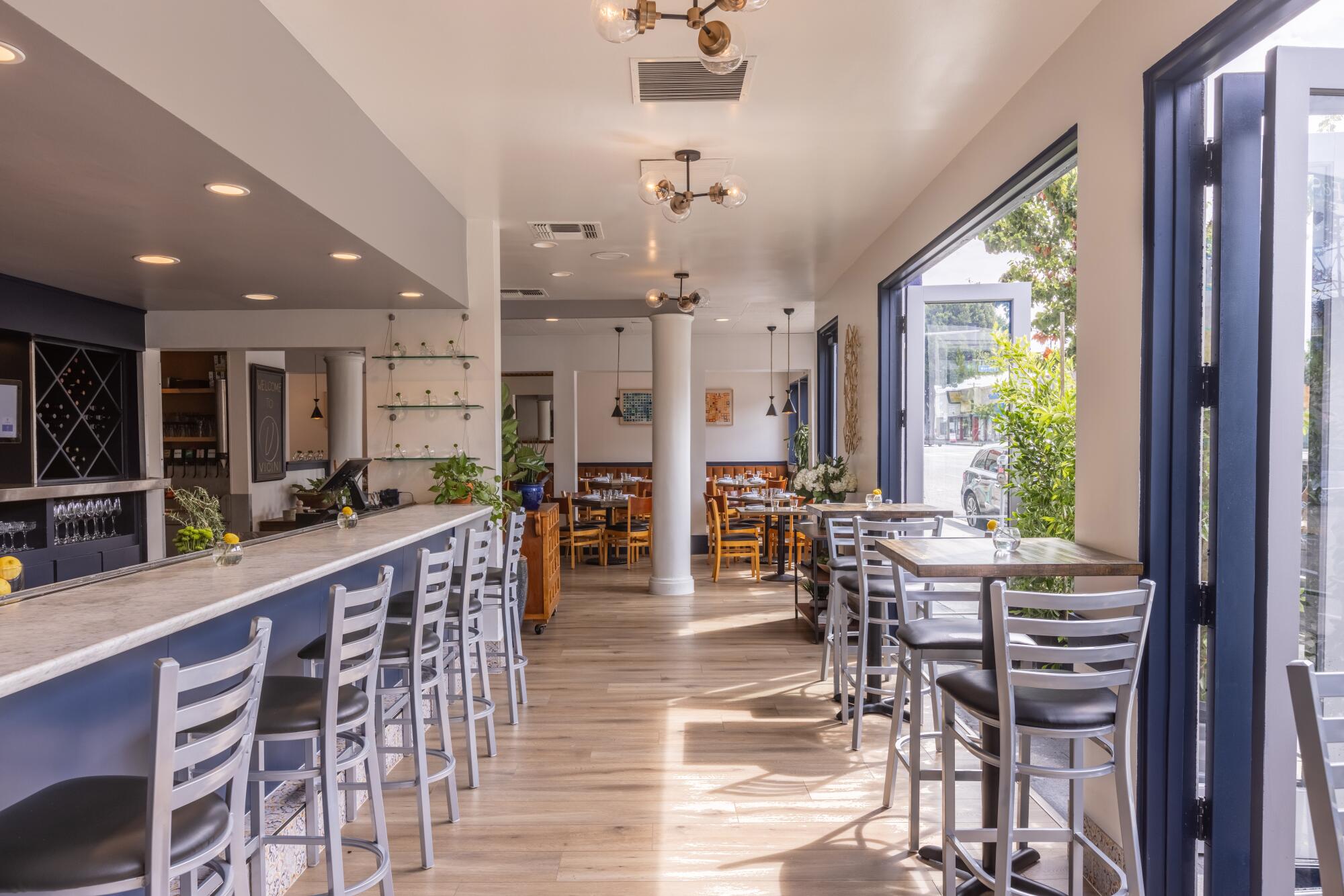
Chef and co-owner Lucio Bedon worked for the chain in the mid-1990s, starting off at the Louise’s on Pico. While there, he lived in an apartment behind the restaurant with five other chefs. There were hurdles.
“I didn’t speak any English. Or Spanish,” he said.
Bedon has had stints at several restaurants over the years, including Chait’s Spark Woodfire Grill. But his dream was to open a place of his own where he could cook the cuisine of his native Veneto region. And in a twist, when Bedon was finally able to do it, the opportunity aligned at the site of the Pico branch of Louise’s, which closed earlier this year.
Serritella said that once he and his wife determined that the restaurant would not be part of their long-term plans, they were pleased to sell to Bedon. After that Louise’s shuttered in May, Bedon and his wife, Jennifer, remodeled the space and opened Vicini in August.
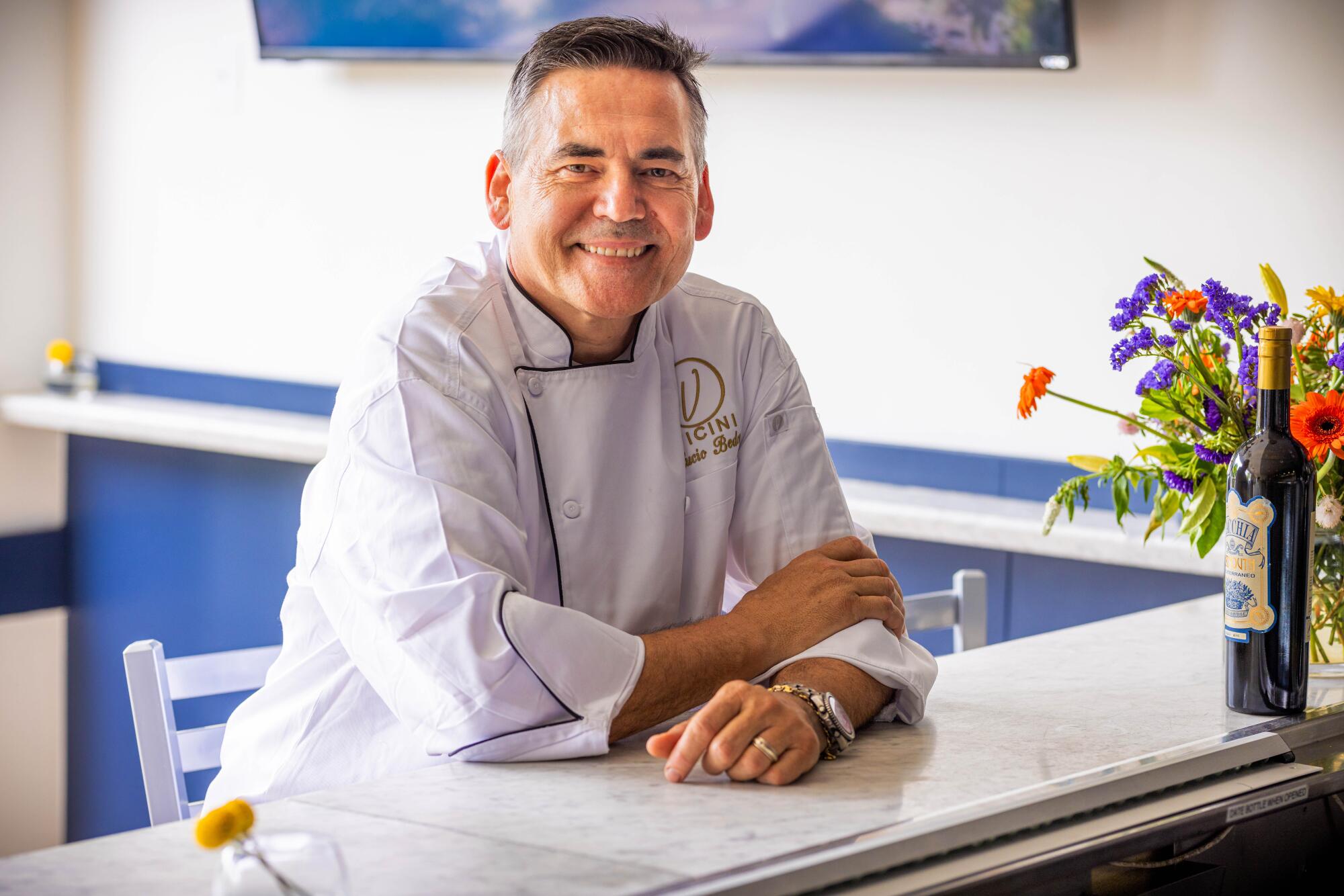
On a recent Friday night, Bedon strode through the dining room, shaking hands with some diners and pouring dessert wine for others before sliding onto a long banquette that offered an expansive view of his restaurant.
Bedon acknowledged the poetry of the moment: He’d fulfilled a lifelong dream by opening Vicini — an accomplishment that was occurring in the same location where his American culinary career began nearly 30 years earlier.
If he closed his eyes, Bedon could still see the restaurant that once was.
“You know,” he said, “I came back home.”
More to Read
Sign up for Essential California
The most important California stories and recommendations in your inbox every morning.
You may occasionally receive promotional content from the Los Angeles Times.














